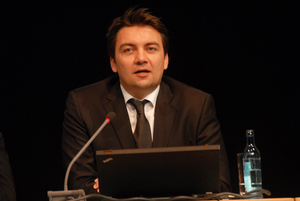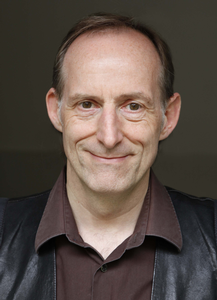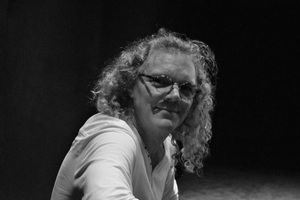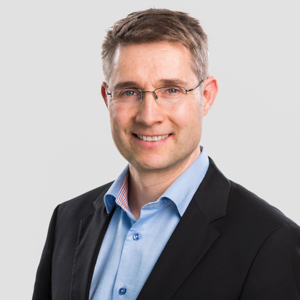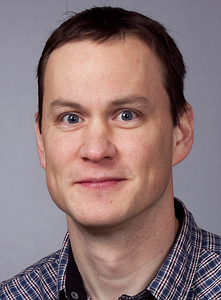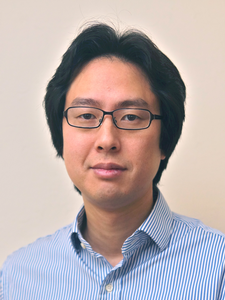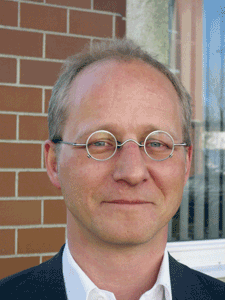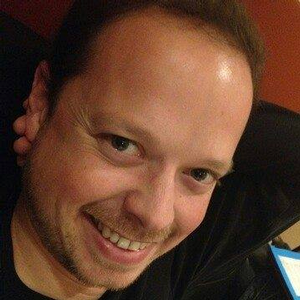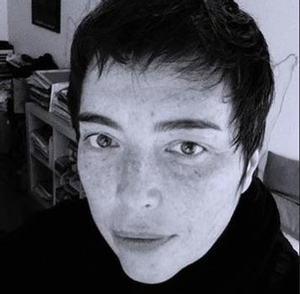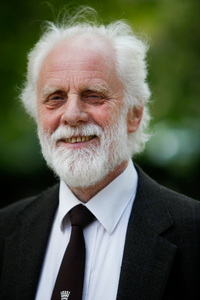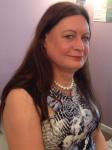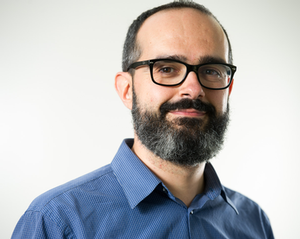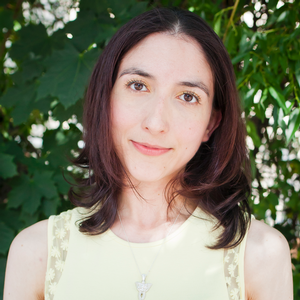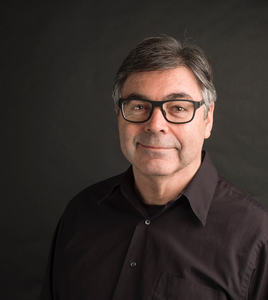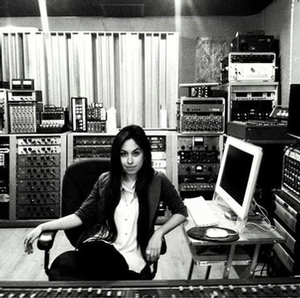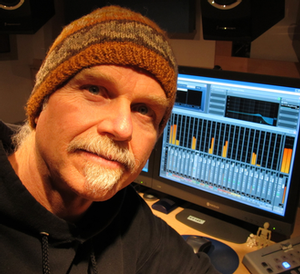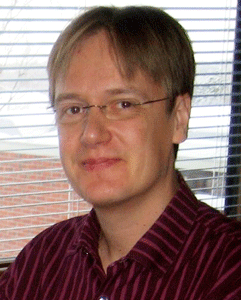
AES Paris 2016
Tutorial Details
Saturday, June 4, 09:00 — 10:15 (Havane Amphitheatre)
T1 - Main Microphone Techniques for 2.0 and 5.1
Presenter:Helmut Wittek, SCHOEPS GmbH - Karlsruhe, Germany
Abstract:
This tutorial will explain step-by-step, using many practical examples, what a suitable stereophonic microphone array can look like. With 2.0 stereo setups as the starting point, multichannel setups will also be introduced. Many factors influence the choice of a stereophonic microphone setup, but the relevance of these factors can vary greatly depending on the application, such that there is never one single “correct” setup. Knowledge of various options gives a Tonmeister the ability to make optimal choices. In this session the free iPhone and browser App “Image Assistant” will be presented. It calculates the spatial characteristics of arbitrary stereophonic microphone arrays and auralizes the result. Moreover, the educational website www.hauptmikrofon.de is presented offering various comparative sound samples on the subject.
 | This session is presented in association with the AES Technical Committee on Spatial Audio |
Saturday, June 4, 13:30 — 15:00 (Room 352A)
T2 - Binaural Applications with Auro-3D Immersive Sound
Presenters:Wilfried Van Baelen, Auro Technologies N.V. - Mol, Belgium
Bert Van Daele, Auro 3D & Galaxy Studios - Mol, Belgium
Abstract:
Auro-3D, and Immersive Sound in general, bring a new exciting listening experience to the audience on various reproduction systems. In many applications the audio will be reproduced using multiple speakers, but for many people headphones are actually the main listening device. Binaural processing allows to playback immersive sound on headphones by applying the necessary filters to recreate the directional cues related to the various speaker and/or object positions in the 3D auditory space.
In this tutorial, a short explanation will be given about Auro Technologies’ own technology to reproduce Auro-3D content over standard headphones. In a second part of this session, Auro’s unique upmixing technology for headphones will be introduced, which provides a three-dimensional experience on headphones from standard stereo and surround audio tracks.
AES Members can watch a video of this session for free.
Sunday, June 5, 09:00 — 10:00 (Room 352A)
T3 - Headphone Virtualizations—Produce a New Immersive / 3D Sound Experience for the Main Audio Application of Today
Presenter:Tom Ammermann, New Audio Technology GmbH - Hamburg, Germany
Abstract:
Headphones are the most common audio playback device to listen to music. Games and mobile film entertainment is a growing headphone application, too. Furthermore virtual and augmented reality is evolving where headphones certainly will have a basic role. So listen simply stereo on headphones shouldn’t be the end but the beginning of involving audio experiences with the flexibility of headphone applications. The tutorial will show different applications, tools, and provide a lot of listening examples from the new “Major Band” production.
Sunday, June 5, 12:45 — 13:45 (Room 351)
T4 - Acoustics on a Budget
Presenters:Eddy B. Brixen, EBB-consult - Smørum, Denmark; DPA Microphones
Ben Kok, BEN KOK - acoustic consulting - Uden, The Netherlands
Abstract:
Achieving good acoustics in the studio is one of the most challenging tasks for an audio engineer, particularly when working on a limited budget. This tutorial will give a brief review of room acoustic requirements for project studios. The presentation includes practical tips on how to improve acoustic performance using common sense and commonly available low-cost materials. Also, methods how to identify and localize room acoustic problems without the use of advanced test equipment will be discussed; and finally, some do’s and don'ts regarding loudspeaker placement.
AES Members can watch a video of this session for free.
 | This session is presented in association with the AES Technical Committee on Acoustics and Sound Reinforcement |
Sunday, June 5, 14:00 — 15:15 (Room 352A)
T5 - WFS Object Based Mixing for the “Concert & Drama” Environment Produced by Radio France
Presenter:Frédéric Changenet, Radio France - Paris, France
Abstract:
For a year and a half, the Orchestre National de France (ONF) and the “service des fictions” (France Culture) have been co-producing “Concerts & Drama” that are a subtle mix of a radio drama and a symphonic music concert from original text and music. Actors and “sound effects experts” are on the stage of the Studio 104 (856 seats) with the orchestra in an oratorio configuration for a public show. WFS is used for the PA and a live mix is produced for broadcasting. In this tutorial the presenter will describe the technical and artistic aspects of these productions, with special attention devoted to the issues of an immersive 3D Sound Reinforcement using object based mixing in WFS.
Sunday, June 5, 15:30 — 16:45 (Room 352A)
T6 - "Sequences" - The Live Production of Electronic Music for Surround Reproduction
Presenter:Hervé Dejardin, Radio France - Paris, France
Abstract:
Presentation of the production "Séquences." How were the audio tracks recorded, mixed, and distributed as a series of 13 live electronic music videos in 5.1 and binaural, filmed in 360°, and composed entirely on machines? We will present the problems that appeared at different stages of production. The recording, post production, spatial design, the reverb., etc., will be discussed; and during the tutorial, binaural examples will be played for everybody to hear on headphones.
AES Members can watch a video of this session for free.
 | This session is presented in association with the AES Technical Committee on Recording Technology and Practices |
Sunday, June 5, 15:30 — 17:00 (Room 351)
T7 - Auro-3D Formats and Technologies - An Overview
Presenters:Wilfried Van Baelen, Auro Technologies N.V. - Mol, Belgium
Bert Van Daele, Auro 3D & Galaxy Studios - Mol, Belgium
Abstract:
The audio world has recently seen the advent of several new audio formats, each claiming to bring a new three dimensional, immersive sound or “Surround with Height” listening experience to the listener. As a result several organizations are working on a standard for Immersive Sound, incorporating channel-based and/or object-based audio capabilities.
The introduction of such new formats bring new options as well as challenges for content creators such as movie studios, post production, and music facilities. After having experienced the fun side of the new creative options, engineers are still faced with several challenges, as well as optimizing the object-based elements of the Immersive Sound standard for reproduction on a plethora of reproduction systems, each with a number of common as well as unique features. At the same time choices need to be made to maximize the preservation of the creative intent on all reproduction systems.
This tutorial will help establish the fundamentals of the Auro 3D approach to Immersive sound, which enables simultaneous creation of content in various audio formats for movies and music, including the Immersive Sound formats. Several points are highlighted such as compatibility between deliverables, creative possibilities and limitations, and playback in theaters and at home.
AES Members can watch a video of this session for free.
Monday, June 6, 08:45 — 09:45 (Room 352A)
T8 - Using Binaural Head Recording Techniques with Related HD Video for Music Production
Presenter:Bob Schulein, RBS Consultants / ImmersAV Technology - Schaumburg, IL, USA
Abstract:
The presentation will focus on producing music with related video using binaural head capture. Excerpts will be presented from a variety of productions that our group has created. Presenter Bob Schulein will discuss the synergy between binaural audio and related video as related to the artistic goals of productions.
AES Members can watch a video of this session for free.
Monday, June 6, 08:45 — 09:45 (Room 351)
T9 - Immersive Sound Design with Particle Systems
Presenters:Nuno Fonseca, ESTG/Polytechnic Institute of Leiria - Leiria, Portugal; Sound Particles
Yohann Bernard, Sound Designer - France
Abstract:
This tutorial will show how to use particle systems to create immersive sound. Using the new “Sound Particles” software, a 3D CGI-based software for audio, particle systems can be used to trigger thousands of sounds over a virtual 3D space, capturing the obtained result in different immersive formats. Based on original audio files taken from sound libraries, highly complex audio scenes can be created, such as a battlefield or an immersive 3D fire. This solution was already used on several movies and TV series and is currently being tested in all the major Hollywood studios.
Monday, June 6, 10:00 — 11:15 (Room 351)
T10 - Multichannel 3D for Synthesizer Music with Vocals
Presenter:Lasse Nipkow, Silent Work LLC - Zurich, Switzerland
Abstract:
In synthesizer music, vocals are usually strongly compressed, so that they hold their own against the rest of the mix. In a multichannel 3D format the conditions are different: the sounds are no longer all coming from the same direction as the vocals, but from other directions around the audience. If the vocals are only being played back from the center channel, even though they will come through better, there is still the danger they will not merge timbrally with the rest of the music. Hence new ground must be broken at the conception and mixing of a song, in order to attain a satisfactory result. In this presentation, psychoacoustic considerations relating to the aforementioned cases are discussed and practically demonstrated on the basis of audio / video examples.
Monday, June 6, 10:00 — 11:00 (Havane Amphitheatre)
T11 - User-Centered Agile Game Sound Design
Presenter:Arne Nykanen, Anglia Ruskin University - Cambridge, UK; Luleå University of Technology - Luleå, Sweden
Abstract:
Good game sound or interactive sound design is often determined by the work processes used. This tutorial will take a comprehensive view on how experience from psychoacoustics, industrial design, user-centered design, agile software development, and computer games design can be merged to arrive at good sound design practices. Based on this review, a user-centered agile sound design practice is proposed. The core idea is to organize the design work into short iterations (sprints), listening to the evolving product frequently, and repeatedly throughout the design process, and get users (players) into the loop early on. Demonstrations will be made of how DAWs, software synthesizers, audio programming languages, game engines, and game audio middleware can be used to facilitate such design processes.
AES Members can watch a video of this session for free.
 | This session is presented in association with the AES Technical Committee on Audio for Games |
Monday, June 6, 11:30 — 12:45 (Room 351)
T12 - Perceptual Signal Processing for 3D Sound Recording
Presenter:Hyunkook Lee, University of Huddersfield - Huddersfield, UK
Abstract:
This tutorial/demo session will explain some of the psychoacoustic principles for vertical stereophonic perception and discuss various conventional and new signal processing methods for 3D recording from a perceptual point of view. The topics will include 3D upmixing and downmixing, rendering of virtual height/overhead loudspeaker image, and binauralization of 3D recording. The talk will be accompanied with practical 9.1 3D sound examples.
Monday, June 6, 11:30 — 12:45 (Havane Amphitheatre)
T13 - 100 Years of Condenser Microphones
Presenter:Martin Schneider, Georg Neumann GmbH - Berlin, Germany
Abstract:
On Dec. 20, 1916, E. C. Wente’s patent of a “telephone transmitter” based on the capacitive principle was filed. It soon proved it’s usefulness as the most linear transducer principle and developed into the measurement microphones we use today. It was also quickly adopted for broadcast, recording, and film work and became the standard recording microphone type worldwide in the 1950s. One hundred years after E. C. Wente’s patent application, the condenser microphone must be considered as the most important microphone transducer type, being the most linear and conceptually simple at the same time. This tutorial gives a detailed overview of the major developments concerning audio applications in these first 100 years of condenser microphone development.
Monday, June 6, 13:00 — 14:00 (Room 351)
T14 - Immersed by Emotions: Film Music in Auro3D
Presenter:Patrick Lemmens, Galaxy Studios - Mol, Belgium
Abstract:
The emotions in a film are crafted to a large extent by the music; a film without music has a cold and sterile feeling to it, while the music that exclusively accompanies a silent film is able to affect the feelings of the audience in practically any way desired by the composer. The third dimension of sound reproduction—which is added to the conventional 5.1 or 7.1 surround sound in cinema by using the different Auro3D formats—provides a fully immersive experience to the audience and gives them the impression of being in the middle of the action; especially the music plays an important role in establishing this immersive feeling, as the 3D format offers extended possibilities for creating the desired emotions to the composer and the music engineer.
Monday, June 6, 14:45 — 15:30 (Room 352A)
T15 - Creating a Virtual Acousmonium in Unity5
Presenter:Christine Webster, Soundwebster, ENSAD-LAB-EN-ER - Paris, France
Abstract:
The tutorial will show how it is possible to create an immersive 64 channel acousmonium in a 3D graphic scene with Unity5. Examples will come from Christine Webster's last EA virtual 3D immersive project “Empty Room.” http://spatialmedia.ensadlab.fr/projet-empty-room/
AES Members can watch a video of this session for free.
 | This session is presented in association with the AES Technical Committee on Spatial Audio |
Monday, June 6, 14:45 — 15:45 (Room 351)
T16 - The Evolution of Stereo to Surround Sound—What Do the Various Present Day Formats Really Bring to the Surround Sound Experience
Presenter:Michael Williams, Sounds of Scotland - Le Perreux sur Marne, France
Abstract:
This presentation will explain the configuration of the different formats, their faults, and the possible improvements that are possible. This presentation will also allow the listener to compare different formats - stereo with triphony, quadriphony with multichannel, multichannel with Blue ray, quadriphony with Blue ray, etc. This comparison process is the result of simultaneous multiformat recordings and uses fast cross-fading between the different formats. This fast fade technique is used in order to improve perception of the advantages and faults of different format configurations. This presentation will use a basic eight channel horizontal loudspeaker configuration which is the basic Blue ray loudspeaker configuration plus a back channel. This experience has already been presented to the French Section of the AES in a meeting in Lyon. As the comparison point of each format is produced, a unique method of synchronization of powerpoint slides will inform the listener of the structure of each individual reproduction format.
Monday, June 6, 15:45 — 16:45 (Room 352A)
T17 - Binaural and Audiovisual Content
Presenters:Delphine Devallez, Arkamys - Paris, France
Lidwine Ho, France télévisions - Paris, France
Abstract:
Broadcasters are now facing a digital and wireless world of interactivity and personalization. Users demand transmedia contents that need new tools and give new sensations. Binaural audio allows the perception of a 3D sound space around the listener in a very realistic way. This paradigm is totally new in television production that proposes scene and action in front of the viewer. There is a real impact of the vision on the binaural hearing, how to deal with the multisensory perception in TV production? How to use it and what are the issues? The role of head movement, captured via a head tracking device, is also discussed as it greatly improves the spatial perception. This tutorial session is illustrated with contents already broadcasted on a non-linear web TV platform. It is based on listening, viewing and explaining filmed extracts.
Monday, June 6, 15:45 — 17:00 (Room 351)
T18 - 3D Sound Reproduction—A Study of Different Format Reproduction Possibilities
Presenter:Michael Williams, Sounds of Scotland - Le Perreux sur Marne, France
Abstract:
This presentation will analyze the different formats of 3D sound reproduction and the basic principles of sound localization around a 3D microphone/loudspeaker array. It also explains the psychoacoustics of perception in a 3D hemispherical space. The ˜Witches Hat" localization and "Top Hat" localization will be explained to illustrate the parameters for this 3D localization - these two localization structures were presented by the author at a recent Taktons Convention in Novi Sad, Serbia. This presentation will demonstrate the characteristics of the present 3D formats with a multitude of sound recordings from the sounds of nature, to various other musical formations. The proposed sound formats include: • 5 horizontal channels + 4 elevation channels; • 5, 7, 8 horizontal channels with 4 (or 8) elevation channels, plus 1 Zenith channel. The structure of these two types of configurations leads quite naturally to a number of very interesting compatible configurations, which are also demonstrated using the technique of immediate quick fades between tracks of a simultaneous microphone array recording, for comparison without any time lapse. A certain number of recordings will be presented from the natural environment and also with some musical groups. All this will lead up to a demonstration of a new format ˜Comfort 3D" using a triple five (plus one) microphone array recording system. Some of the experimental listening tests with an artificial sound source moving around the microphone array at various angles of elevation can also be demonstrated if time allows.
Tuesday, June 7, 08:45 — 10:00 (Room 351)
T19 - How to Do Audio Sampling, and Sample Rate Conversion, Properly!
Presenter:Jamie Angus, University of Salford - Salford, Greater Manchester, UK; JASA Consultancy - York, UK
Abstract:
Sampling, and sample rate conversion, are critical processes in digital audio. The analogue signal must be sampled, so that it can be quantized into a digital word. In addition digital audio signals are often converted between sample rates, either as part of the conversion process, for mastering to a particular audio format, or varispeed playback. How does sampling affect the audio signal? What conditions must be met in order to sample audio signals properly? Does the sampling rate affect the timing, or lose information, from the music? Does changing the sample rate do any of these things. Are there further pitfalls? This tutorial will unravel these questions and, with audio examples, will show how sampling, and sample rate conversion, when done properly, can be done in a transparent and lossless fashion that preserves all of the original signal's qualities.
AES Members can watch a video of this session for free.
 | This session is presented in association with the AES Technical Committee on Signal Processing |
Tuesday, June 7, 10:00 — 11:00 (Room 351)
T20 - ASR - Automatic Speaker Recognition
Presenter:Antonio Moreno, Agnitio - Madrid, Spain
Abstract:
This tutorial gives an overview of ASR, Automatic Speaker Recognition. Special attention on parameters applied, the kind of speech segmentation applied, redundancy of the systems, hardware requirements, implementation in portable systems, the hit-rate, etc. The intention of the presentation is to be educational.
AES Members can watch a video of this session for free.
Tuesday, June 7, 11:15 — 12:15 (Room 352A)
T21 - Sound Design and Accessibility in Film and Television
Presenter:Mariana Lopez, Anglia Ruskin University - Cambridge, UK
Abstract:
Since the 1970s Audio Description (AD) has been making visual content accessible to visually impaired people through sound. In film and television a pre-recorded audio commentary provides information that clarifies the narrative, such as descriptions on actions, gestures and places. Although, throughout the years, digital technologies have been used to improve the mode of delivery of AD, the notions behind its design have been mostly unchanged despite significant advancements in the field of digital sound production and post production. This tutorial introduces participants to the history of sound design and accessibility in film and TV and discusses new research on the use of surround sound rendering and interactive media systems to create more spatially accurate soundtracks, as well as the introduction of first person narration.
Tuesday, June 7, 11:15 — 12:30 (Room 351)
T22 - Sounds Across the Sea - A Journey in 9.1 Immersive Audio
Presenters:Morten Lindberg, 2L (Lindberg Lyd AS) - Oslo, Norway
Daniel Shores, Sono Luminus - Boyce, VA, USA; Shenandoah Conservatory Music Production and Recording Technology - Winchester, VA, USA
Abstract:
For years Morten Lindberg and Daniel Shores have inspired each other across the Atlantic to develop new techniques and implementing new recording formats; initially in surround sound and lately moving forward in immersive audio. In this workshop we'll meet together playing a wide range of 9.1 examples, discussing microphone techniques, production workflow and musical sound design.
Tuesday, June 7, 12:30 — 13:45 (Room 352A)
T23 - Audio Forensics—What's It All About?
Presenter:Eddy B. Brixen, EBB-consult - Smørum, Denmark; DPA Microphones
Abstract:
Working with audio forensics is serious business. Depending on the work of the forensics engineer, people may eventually end up in prison. This tutorial will present the kind of work related to the field. This covers fields as acoustics, when audio analysis can be a part of the crime scene investigation. Voice acoustics: Who was speaking? Electro acoustics: Checking data on tapes, discs or other data storage media. Recording techniques: Is this recording an original production or is it a copy of others' work. Even building acoustics and psychoacoustics, when the question is raised: Who could hear what? However, the most important 'everyday work' of the audio forensics engineers is cleaning of audio recordings and providing transcriptions.
AES Members can watch a video of this session for free.
 | This session is presented in association with the AES Technical Committee on Audio Forensics |
Tuesday, June 7, 12:30 — 13:45 (Havane Amphitheatre)
T24 - Creative Vocal Production Techniques
Presenter:Michelle Desachy, Estudio19 - Mexico City, Mexico
Abstract:
Tutorial where we will dwell on the treatment of the lead voice and the background voices to create atmospheres and sonic flavors using recording techniques, using different microphones and the reasons why, using typical an non typical effects, using plug ins, and most of all using creativity, we will explain how human creativity works, the historical reasons why creativity plays an essential role in human development of art and how this can be applied to music and specifically on vocal production.
Tuesday, June 7, 12:30 — 13:45 (Room 351)
T25 - Zen-Meets-Tech Experience
Presenter:David Miles Huber, www.davidmileshuber.com - Seattle/Berlin; Seattle/Berlin
Abstract:
Four-times Grammy-nominated electronic artist David Miles Huber will be presenting Parallax Eden, which has been released on the Auro Technologies own Auro-3D Creative Label as a Pure Audio Blu-ray with an exceptional Auro-3D, Stereo, and Surround mixes.
The Auro-3D mix creates an exciting three-dimensional soundscape thanks to the addition of a Height layer in front, above and all around the listener. Auro-3D is an exciting move from two-dimensional surround sound formats to three-dimensional sound and is the only sound system on the market that has both 5.1 Surround and Auro 9.1 in one standard PCM delivery file with high resolution audio in each channel, making easy distribution on any system in the world possible.
Parallax Eden is a Grammy-nominated project that is unique in more ways than one. Composed, produced and mixed by electronic music artist, David Miles Huber – this project has been layered in various multi-dimensional ways. Not only does it offer the listener mixes in various format versions (Stereo, 5.1 Surround and last but not least Auro 9.1 immersive sound), Parallax Eden offers up to three completely different mix versions. All three formats will hold a different mix of the original compositions, ranging from the “Chill Mixes” up to the uptempo “Berlin Remixes.” Musically, Parallax Eden transports the listener to a new place, where down-tempo beats are carefully crafted with up-tempo grooves in imaginative ways, taking you on a journey that’s both tranquil and energizing.
Tuesday, June 7, 14:00 — 15:00 (Room 352A)
T26 - Applications of Binaural Psychoacoustics In Audio—Designing Spatial Audio Techniques for Human Listeners
Presenter:Ville Pulkki, Aalto University - Espoo, Finland
Abstract:
The human spatial hearing mechanisms are based on signal analysis in the auditory system. The monaural attributes of, and binaural differences between ear canal signals form the time- and frequency-dependent spatial cues. The cues are subconsciously analyzed by the brain, which forms the auditory spatial image. This tutorial will review current knowledge of the psychoacoustics of spatial hearing, in particular the perception of directions and distances of sources in free field and in reverberant conditions. Non-linear signal-dependent spatial audio technologies analyze spatial metadata directly from sound field or spatial audio signals with time-frequency-space resolution matching with hearing mechanisms. Optimally, the technologies should designed to reproduce the spatial cues with just good enough resolution without overdoing. The trends in the technologies will be discussed in the tutorial.
 | This session is presented in association with the AES Technical Committee on Spatial Audio |
Tuesday, June 7, 14:00 — 15:45 (Havane Amphitheatre)
T27 - Parametric Spatial Audio Processing: An Overview and Recent Advances
Presenters:Emanuël A. P. Habets, International Audio Laboratories Erlangen - Erlangen, Germany
Oliver Thiergart, International Audio Laboratories Erlangen - Erlangen, Germany
Abstract:
Parametric spatial processing is a promising and emerging technique that is fundamentally different from traditional spatial processing techniques. First, a relatively simple sound field model is adopted and the parameters of the model (such as for example the direction of arrival and diffuseness), are estimated in a time-frequency domain. Second, the estimated parameters are used to process the received microphone signals. The compact and efficient representation of the sound field can be used to develop algorithms for different applications. In this tutorial different sound field models and corresponding parameter estimation techniques will be presented. We will then focus on selected applications such as speech enhancement (directional filtering and dereverberation), acoustical zooming, spatial audio communication, surround sound recording, and reproduction.
AES Members can watch a video of this session for free.
 | This session is presented in association with the AES Technical Committee on Spatial Audio |
